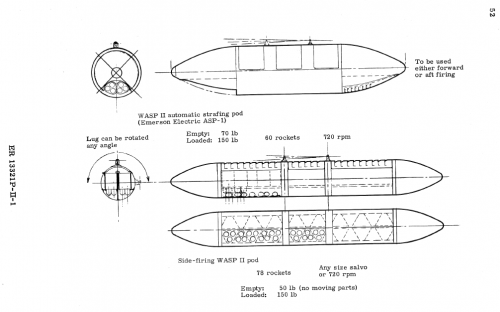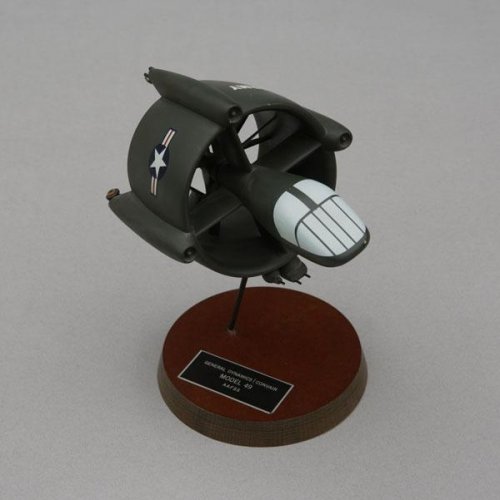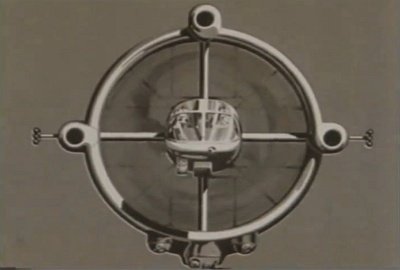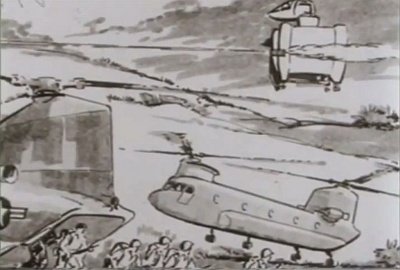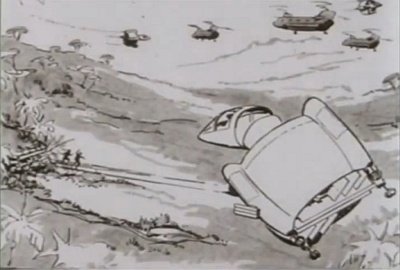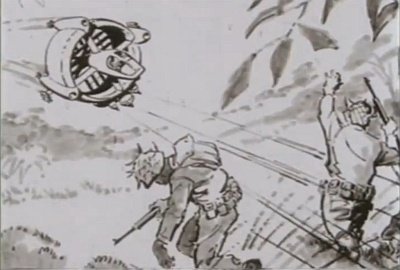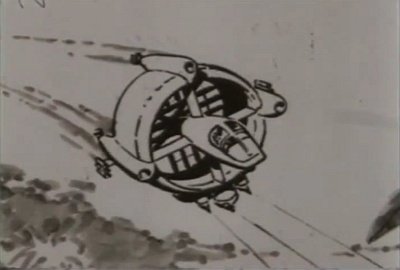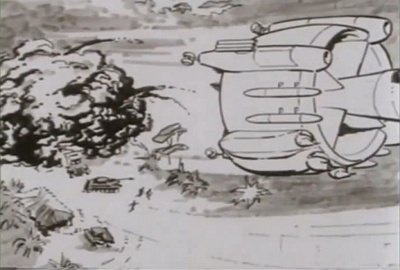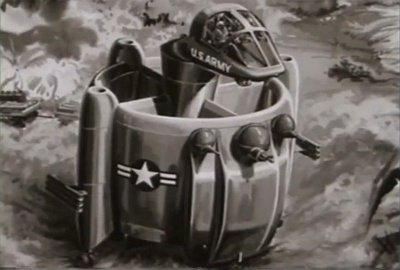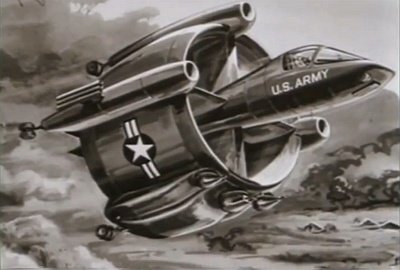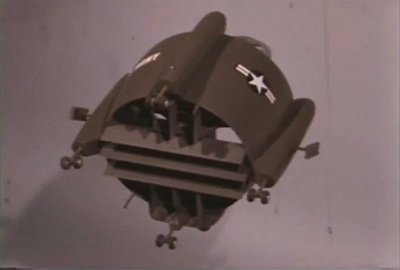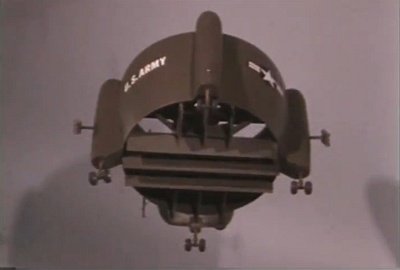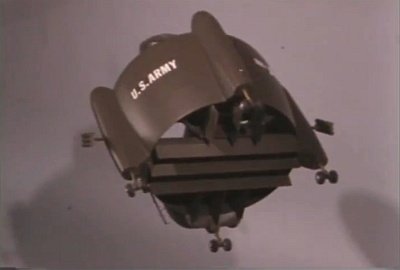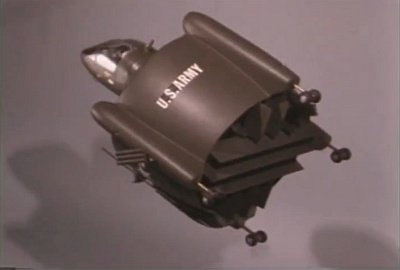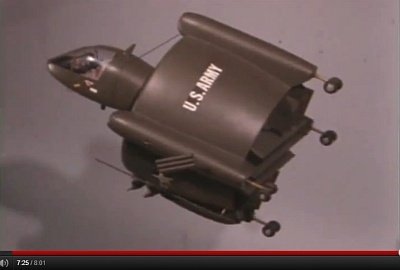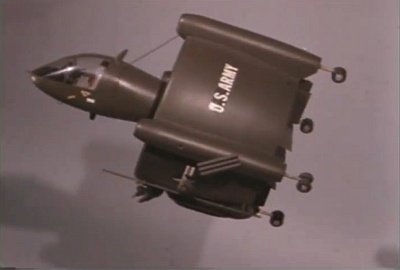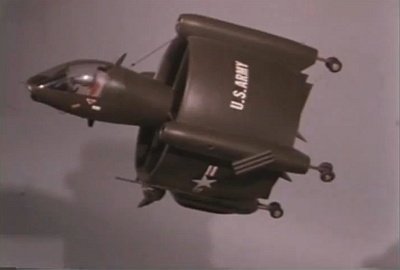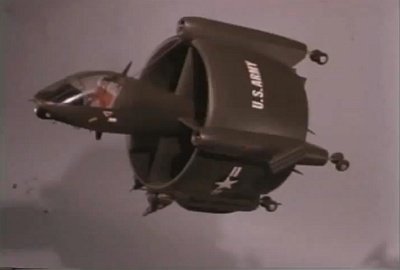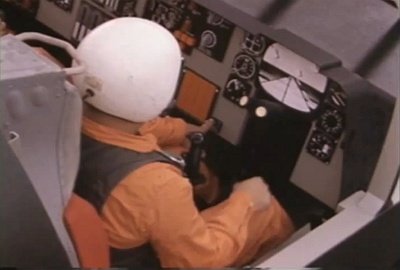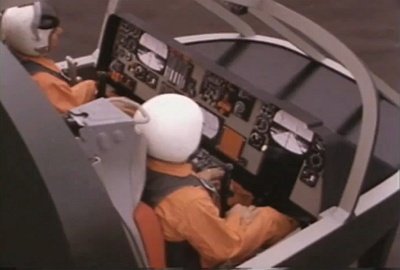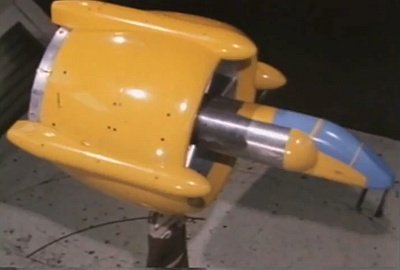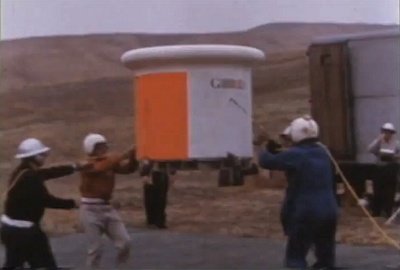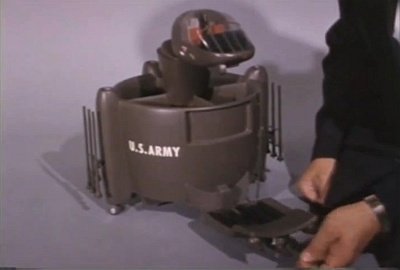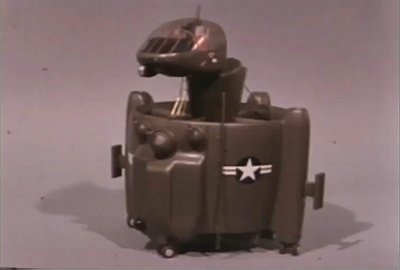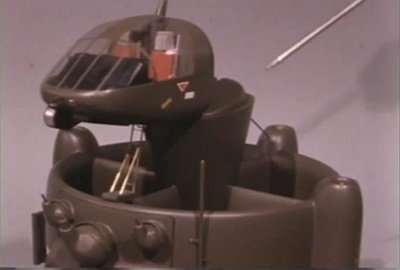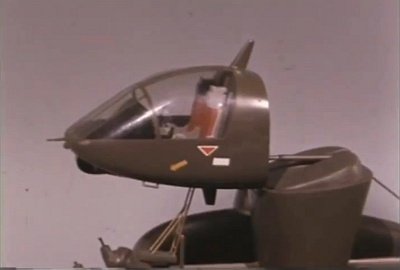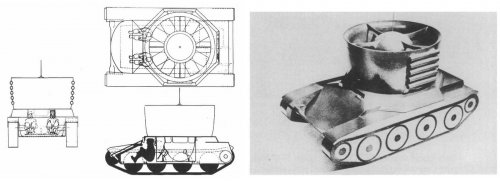Robert Bradley’s “Convair Advanced Designs II” has a chapter on the Convair AAFSS (Advanced Aerial Fire Support System) submission (Model 49) that anyone who has followed this thread would know has got me pretty excited. Even without looking at the next chapter on the similar, but different, concept ASW “Localisation And Attack System” (LAAS) shipboard VTOL for the Navy. The book has lots of information on the Model 49 including weights and performance figures and a very nice inboard profile. I thought I would mention some of this new information here and if you excuse me for blowing my own trumpet compare it with some of the predictions I made on this design over the last few years.
Firstly the inboard profile shows that all of the fuel was carried in the central spine of the aircraft between the pivoting crew cabin and the rotor gear box (Convair call it a rotor). The annular wing is practically empty.
As one would expect with an aircraft with four major gearboxes there is quite a bit of oil cooling. These coolers are all located in three of the four fixed cross vanes that connect the central spine to the annular wing. Intakes are on the leading edge and will always have moving air across them when the rotors are spinning thanks to the suction effect. 66% of the oil cooling is for the main rotor gearbox and 11% for each of three right hand turn, main engine gearboxes.
Abraham Gubler said:
Also what is happening to the turbine exhaust? Is it being injected into the duct? There is no easily identified exhaust vent in the pictures of the Model 49 but the engine covers show that they are mounted at the lip of the shroud.
Yes each of the engines is exhausted inside the duct. Between the rotors and the pitch and yaw vanes. Which would make it extremely difficult to see the hot exhaust pipes from outside the aircraft. Significantly lowering the aircraft’s overall IR signature.
Crew escape is detailed and my prediction earlier was wrong:
Abraham Gubler said:
the crew capsule would probably have an F-111 style ejection system enabling the crew to survive the crash.
No escape capsule but each crewmember does have an ejection seat. And the seats were useable in any of the various flight configurations the Model 49 could adopt.
The inboard profile provides plenty of details on the avionics and the weapons magazines which are both plentiful. A 52 point key is provided though I found it much easier to read after scanning at high resolution and zooming in. Sorry spongers but I won’t upload even a low res copy of that scan, go buy the book!
On to weights and Bradley mentions that the Model 49 AAFSS maximum gross weight was
29,500 lbs,
Abraham Gubler said:
Quickly using the McCormick thrust loading formula the Convair Model 49’s propellers and engines (three LTC4B-11s able to produce 3,400 lbs each) should be able to generate around 35,284 lbs of thrust (taking into account an additional 20% efficiency thanks to the ducted fan). The Model 49 is very heavily thrust loaded compared to a conventional helicopter. Meaning maximum takeoff weight of the Model 49 (with the manoeuvre margin) should be about 13 tons (29,403 lbs).
design gross was weight 21,070 lbs and standard payload 2,855 lbs (=
23,925 lbs),
Abraham Gubler said:
For hovering weights an important factor is the ferry requirement. That’s 8,100 pounds of additional, external fuel (four 300 gallon tanks) that must be lifted from a tail sit. Considering a typical weapons payload is about 3,000 pounds (six TOW missiles, 1,000 30x113mm, 500 40x53mm, 12,000 7.62x51mm) that’s a tactical payload surplus of 5,100 pounds. Meaning with full internal fuel and weapons the Model 49 would weigh around 24,300 lbs which is LESS than the thrust generated with only two engines (25,111 lbs).
and the empty weight was 13,965 lbs. So I’m pretty happy with my weight breakdown based on working backwards from the lift potential of the duct and rotor. Hovering was possible at 6,000 feet (95 F standard day) at a weight of 23,700 lbs and at 4,200 feet with the same weight on only two engines! The aircraft was designed to complete the mission on two engines and get home safely on only one if they malfunctioned or were knocked out by the enemy.
Maximum speed was 400 mph (
355 knots) at 10,000 feet.
Abraham Gubler said:
The Convair Model 49 AAFSS is not a conventional aircraft. While it would have a high maximum speed, well over 300 knots, it would also have a very low stall speed.
Rate of climb at low altitude (unspecified) was 8,000 feet per minute. AH-64 Apache can climb at 2,500 feet per minute. Range with 2,855 lbs of payload was 450 NM. Ferry range with external tanks and “auxiliary wings” (!) was over 2,400 NM.
The main source given for this chapter was the Convair submission report. Report name and details are given in the footnotes. Two parts of it are:
Model 49 Advanced Aerial Fire Support System Technical Report – Project Definition Phase Proposal, General Dynamics Convair Report 64-300-1, November 1964
Model 49 Advanced Aerial Fire Support System Technical Report – Volume II Planning Purpose Proposal, General Dynamics Convair Report 64-300-4, November 1964
And judging by the code numbers there are at least another two reports out there. Just in case anyone is thinking of visiting an archive and needs a reference.


